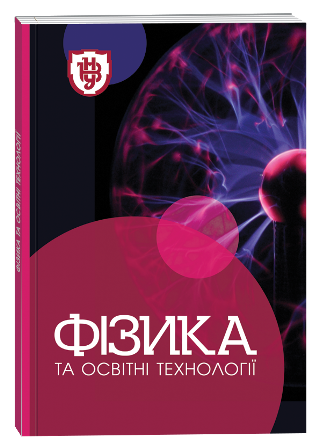IMPLEMENTATION OF A THEORETICAL MODEL FOR DETERMINING THE VALUE OF SOLAR RADIATION FLUX BASED ON MODERN MODULAR SENSORS
DOI:
https://doi.org/10.32782/pet-2023-3-5Keywords:
modular temperature sensor, actinometer, solar radiation, solar constantAbstract
The study of the energy characteristics of solar radiation is a relevant issue in modern astronomy. Their precise and stable measurements are crucial both for establishing the energy balance that determines the Earth's climate and for studying the causes of its change. The intensity of solar radiation is quantified by the solar constant, the total flux of solar radiation passing per unit time through a unit area oriented perpendicular to the flux at a distance of one astronomical unit from the center of the Sun outside the Earth's atmosphere. The branch of astronomy that studies the energy emitted by the Sun, the Earth's surface, and its atmosphere is called actinometry, and devices for measuring various types of radiation are called actinometers. A device for measuring the solar radiation flux, an actinometer, was developed on the basis of the 12 V LED Display Thermostat Control Instrument Temperature Sensor. It is shown that the amount of heat received on the Earth's surface by a unit area per unit time (with fixed dimensions of the actinometer's component parts) can be determined from the following relation σ0 = 1242∙ΔT/τ (J/(m2⋅K)). Using a homemade actinometer, we experimentally determined the amount of heat received on the Earth's surface by a unit area per unit time. The data of the experimental studies are as follows: at the height of the Sun ≈ 30° above the horizon σ????0 ∗ (1) = 6 1)= 664.23 (W/m2); at the height of the Sun ≈ 40° above the horizon σ????0 ∗ ((12)) ==6 788.51 (W/m2), at the height of the Sun ≈ 50° above the horizon σ????0 ∗ ((31))== 8660.44 (W/m2). Assuming uniformity of solar radiation scattering in the Earth's atmosphere over its entire thickness and directions, it is determined that for each kilometer of the Earth's atmosphere, the decrease in σ0 is σ0/l = 0.7146 (W/(m2⋅km)). The value of the solar constant outside the Earth's atmosphere is estimated, which is σ????0 = 1309.87 (W/m2). The obtained value with an error of ε = 4.2% coincides with experimental measurements of the solar constant by scientific institutions.
References
Титко Р., Калініченко В.М. Відновлювальні джерела енергії (досвід Польщі для України): навчальний посібник. – Варшава: OWG, 2010. – 530 с.
Таранова Н.Б. Метеорологія і кліматологія: словник-довідник (основні терміни і поняття) / Н.Б. Таранова. – Тернопіль: Навчальна книга – Богдан, 2013. – 192 с.
Douglass D.H., Clader B.D. Climate sensitivity of the Earth to solar irradiance. Geophys. Res. Lett. 2002, 29(16). – P. 33-1–33-4. https://doi.org/10.1029/2002GL015345
John A.E. The Sun, the Earth, and near-earth space: a guide to the sun-earth system. – National Aeronautics and Space Administration, 2009. – 301 p.
Dufresne J.-L. The measurement of the solar constant by Claude Pouillet. La Meteorology. 2008, 60. – P. 36–43. http://dx.doi.org/10.4267/2042/16943
Sampson R.A. Sun. Encyclopedia Britannica (11-th ed.) / ed. by H. Chislom. – Cambridge: Cambridge University Press, 1911. V.26. – P. 87.
Захожай В.А., Захожай О.В. Основи елементарної астрономії: навчальний посібник. – Харків: ХНУ ім. В.Н. Каразіна, 2021. – 232 с.
Астрономічний календар 2022 / [ред. кол. А.П. Відьмаченко (гол. ред.) та ін.]. – Київ: Академперіодика, 2021. – 214 с.
Корсунь А.О. Земля : астрономічний енциклопедичний словник / [за заг. ред. І.А. Климишина, А.О. Корсунь]. – Львів: Головна астрономічна обсерваторія НАН України: ЛНУ ім. Івана Франка, 2003. – С. 168.
Саратов І.Ю., Дядін Д.В. Конспект лекцій з навчальної дисципліни «Метеорологія і кліматологія». – Харків: ХНАМГ, 2009. – 59 с.








